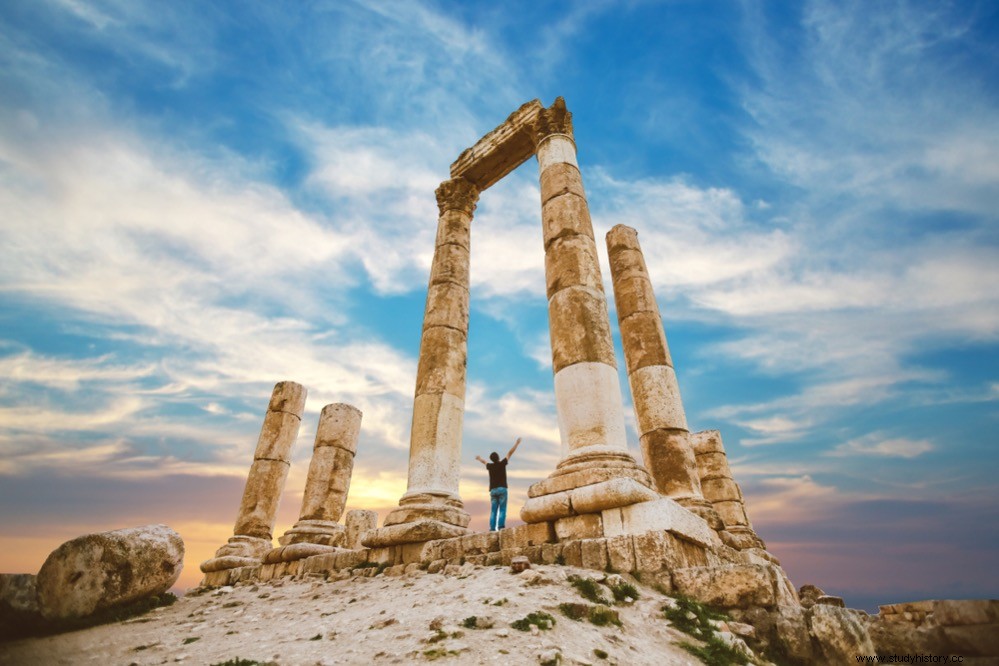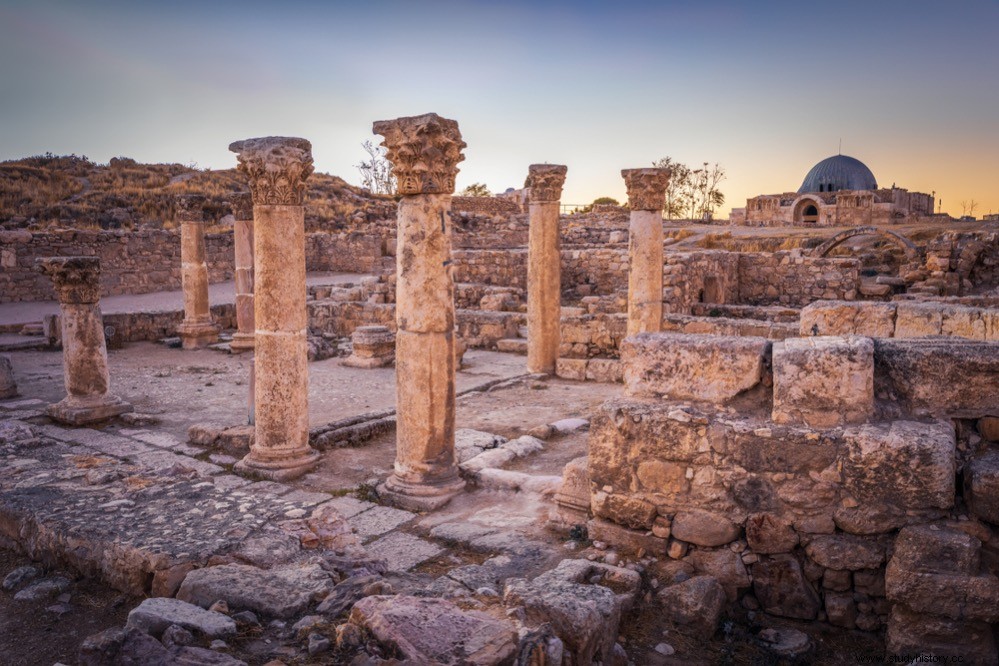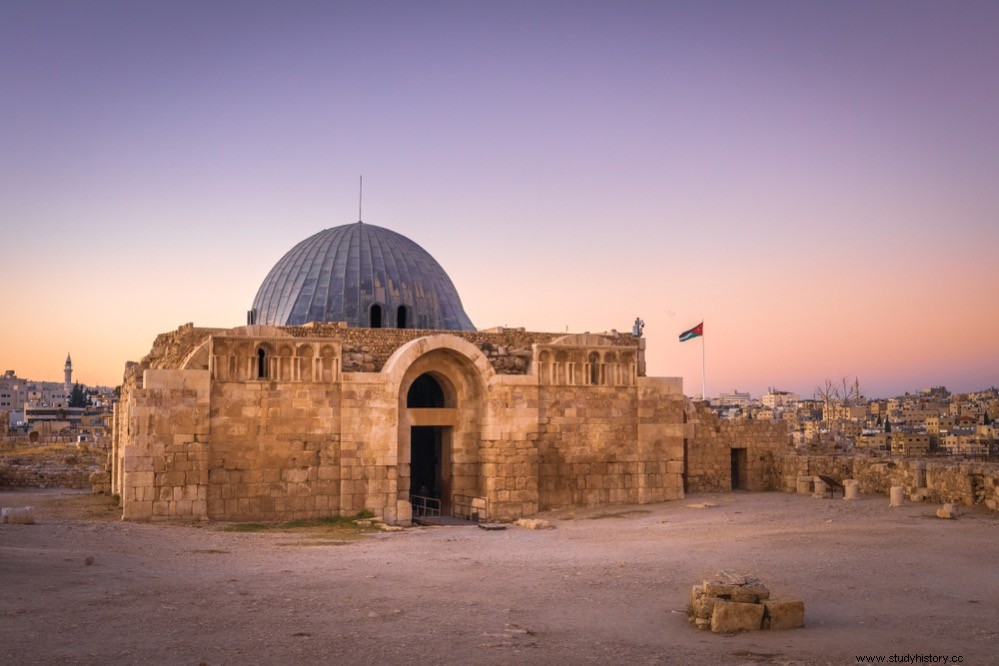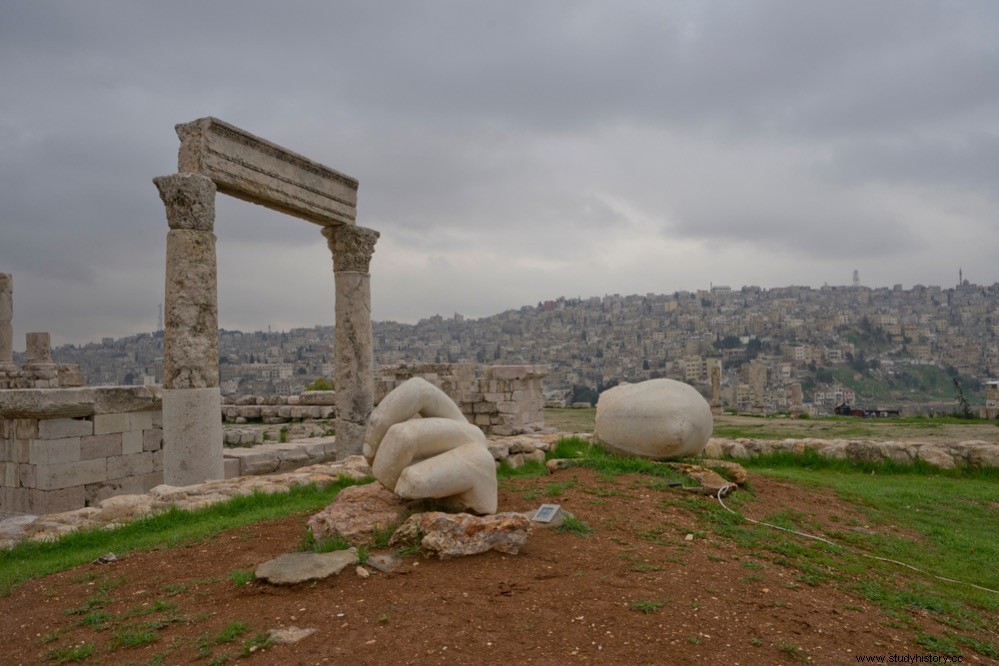The citadel of Amman, the Jordanian capital, is one of the oldest continuously inhabited cities in the world, at least since about 7000 BC. Circa 1200 B.C. It was already called Rabbat-Amón (from which its current name derives), the main city of the Ammonites, a Semitic tribe of which there are abundant references in Assyrian sources and in the Bible, who fought very often in wars with the Israelites.
Occupied by Assyrians, Babylonians, and Persians, it was later conquered by the Greeks in 331 BC, who renamed it Philadelphia. Three centuries later, in 30 BC, the Romans arrived.
And in 661 AD came under Muslim rule. For this reason, the citadel treasures monuments and architectural elements from practically all these periods.

The most notable are the Temple of Hercules, built by the Romans in the 2nd century AD, a Byzantine church, and the Umayyad Palace, probably built on an old Byzantine building in the first half of the 8th century AD.
Excavations in the citadel began in the 1920s, bringing to light remains of occupation from the Bronze Age, Phoenician inscriptions, tombs, walls and other elements.
In the second half of the 1990s, the Jordanian government carried out a program of restoration and conservation of the area, where the Jordan Archaeological Museum is located today.

As we said before, the most important Roman structure in the citadel is the Temple of Hercules or the Great Temple of Amman (at the foot of the citadel we find other structures such as the theater or the odeon).
It was built between 162 and 166 AD, according to an inscription on the architrave of the portico, when Geminio Marciano was governor of the province and Emperor Marcus Aurelius. The dedication to Hercules is deduced from the large number of coins with his effigy found in the city.

Its original dimensions, 43 by 27 meters, made it larger than any temple in Rome itself. The portico had 6 columns of about 13.5 meters high, but since no other remains have been found, archaeologists assume that the building was never finished, and was partially dismantled to take advantage of the marble in the nearby Byzantine church during the Middle Ages.
To this was added that an earthquake in the year 749 caused the roof to collapse and demolished a good part of the columns (re-erected in 1993).

Perhaps it was also the earthquake that destroyed a statue of Hercules that stood next to the temple (although it was most likely shattered earlier as a pagan image). It was not exactly small, since it had a height of between 9 and 12 meters.
All that remains of the statue are an elbow and a fragment of a hand with three fingers, which lie next to the temple in broken blocks, to the amazement of visitors and onlookers.
But what happened to the rest of the statue? City dwellers often say that the rest of Hercules is scattered around Amman, converted to counters and countertops. And they may not be far wrong.

If these remains certainly belonged to a sculpture of Hercules that stood in the citadel in Roman times, we can compare it with some other famous statues, to get an idea of its size:it would have been about 18 meters shorter than the Colossus of Rhodes and the Christ the Redeemer in Rio de Janeiro, 24 meters lower than the Colossus of Nero in Rome, and 34 meters lower than the Statue of Liberty. Still, it must have been impressive.
